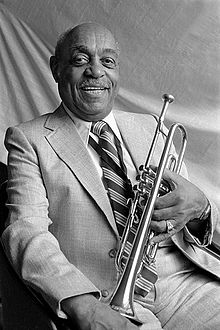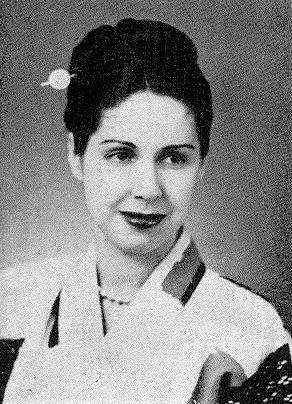I all ubt forgot that years ago, in my early days on ABC, I did a two-part show on alcoholism. Standing out most clearly in memory is an attractive, intelligent, well-spoken mother of three who survived shooting herself in the forehead while drunk.
Readers made the point that “too smart to be a drunk” cuts no — pardon the expression — ice.
It’s a shame that such a heavy price is paid by both the drinker and his victim for a substance that is so wonderful in its good ways: a lubricator of conversation, a steadier of nerves, a remover of that little edge of nervousness, an uninhibitor of the lover. And the lovee. In movies, anyway, a steadier of the trembling hand of the drunken doctor, usually played by Thomas Mitchell.
(Though of course loss of inhibition, pushed too far, can release the inner rapist as well.)
I wish I’d discovered earlier that, with my weak head, a mere tablespoon’s worth of wine before going on took away that annoying little edge of performance nerves.
For a while I felt guilty about this, or about recommending it. Would that make me an enabler? The greats don’t need a drink, I thought. (I was very young.)
Then one night, backstage at “The Tonight Show,” I saw Jack Benny — yes,Jack Benny — seemingly the calmest, most assured and relaxed man in all of show business, quite casually call for and down a couple of inches of Scotch, with one ice cube, before sauntering with that wonderful walk calmly onto the set with Johnny. I stared in disbelief.
I appeared on the old “Kraft Music Hall” with George Burns. Just before airtime I was nervous as hell. George came to my dressing room and offered me a snort from his hip flask as if that were traditional. Brace yourself: I held it in my mouth, nodding thanks, and as he left I spat it into the dressing room sink, terrified that I would come reeling onto the stage. Dressing room sinks, time out of mind, have served multiple purposes.
(Remember George Gobel’s rationale for taking a stiff drink before going on? “You don’t expect me to go out there alone do you?”)
The world of showbiz has always had a heavy population of drunks. Fine actors like Jason Robards, Bogie, Maureen Stapleton, Trevor Howard, most Barrymores, Veronica Lake (drunk on my show), Robert Newton, Dana Andrews (reportedly needing to have his head held in a brace for close-ups) Dick and Liz, Peter O’Toole and Robert Mitchum represent a tiny percentage of the showfolk apparently plagued with “the cup that cheers.” And how did I leave out the great Spencer Tracy, who suffered alcoholseizures, bellowing and hurling furniture and glassware and having to be needled by a doctor into unconsciousness?
Burton’s vivid eloquence on my PBS show on what it is to be the slave of alcohol was recalled by readers, some of whom found it on YouTube, I think. Obviously people vary in their capacities. Mitchum explained, in one of two wonderful shows I did with him, that he could drink large quantities of alcohol with no apparent effect of any kind. Hardly a blessing, liver-wise, I should think.
I told an A.A. friend of mine that by just lightly licking the surface of a martini — not even taking a sip — I can feel it down to my toes. He paled, saying, “My God, I had to drink three to feel anything!”
He’s the same one who told me a profound thing that sticks with me, certainly in relation to Tom of my “Tough Way to Lose a Friend” column. He said, “An alcoholic is so devious, he will even quit drinking to prove he’s not an alcoholic.”
We needn’t recite the list of famous alcoholic writers that usually starts with Hemingway and Fitzgerald and Faulkner.
John Cheever said he could drink anywhere, anytime, except when working. I’d asked, “Does drink help writing?” His negative reply was wonderful: “I can detect a sip of sherry in a paragraph.”
Tom (of the previous column) had worked on many television shows and I’m not sure if my producer was the first or even the last to have to can him — as Tom himself had requested when coming aboard, if he tumbled from the wagon. My producer needed a bit of a nip after performing the hateful deed.
Tom was affable, wittily funny and a hilarious storyteller. One day he came to work lamenting, once again, the gentrification of his beloved Columbus Avenue. He complained that he had just seen a new funeral parlor named “Death ‘n’ Things.”
Strangely, I saw myself as an exception to the apparent rule that everyone has a drunk somewhere in their life. At first I could think of none. Then, in an eerie procession, they began to file into consciousness, coming into focus like ghosts in a story.
Here came Aunt Betty, a gorgeous blonde on my stepmother’s side who made a total mess of her life and family. My somewhat saintly stepmother somehow collared all of Betty’s bewildered grade-school-age kids, brought them to Lincoln from St. Louis while their mom was particularly bad and gave them a birthday party. They’d never had one.
When she inevitably lost the kids, and kicked the booze well after her divorce, she got by on two other addictions. Chain-smoking and crappy television jewelry, which she ordered incessantly, saying, “I need this. It keeps coming in, making every day a birthday.” Not all of her wits survived the booze. When she died, from smoking, all the drawers of her desk were found stuffed with the shiny junk frippery. Most of it unopened.
Smoking, sadly, seems to be the favored other addiction of the alcoholic. Before being recognizable, I was sneaked into an A.A. meeting with a friend. You could barely see the walls for the cigarette smoke, with coffee consumed by the gallon.
Speaking of writers, I once drove the Pulitzer Prize-winner Jean Stafford (the former Mrs. Robert Lowell and also the former Mrs. A. J. Liebling, as well as my late wife’s and my great friend) to her home in East Hampton. She was asleep, drunk, in the passenger seat. Suddenly she stirred and in her beautiful, almost baritone voice said, “I hate it. I hate alcohol. It is my seducer. And my enemy.” And went back to sleep.
I’m at a loss for how to close on this unclosable subject. I think I’ll let one of the readers have the honor. From “geomurshiva of copperstown, ny”:
“Being a critical care nurse for a long time , I have seen what alcohol can do to anyone one of us. We think most often of the long term drinker and the liver failure and the disorientation and the sad last days of coma and the family at the bedside crying so sadly for the loss of another life to booze. Thanks ,Mr.Cavet for the good read. … But, for most of us serving the sick we cry more for the younger ones who got drunk at a college party and then went driving only to die in a car crash or sustains brain injury and paralysis … These victims of alcohol are forgotten all too soon . They become statistics only. Alas.”
source:
http://www.nytimes.com/2014/01/11/opinion/booze-revisited.html?partner=rssnyt&emc=rss&_r=0
















